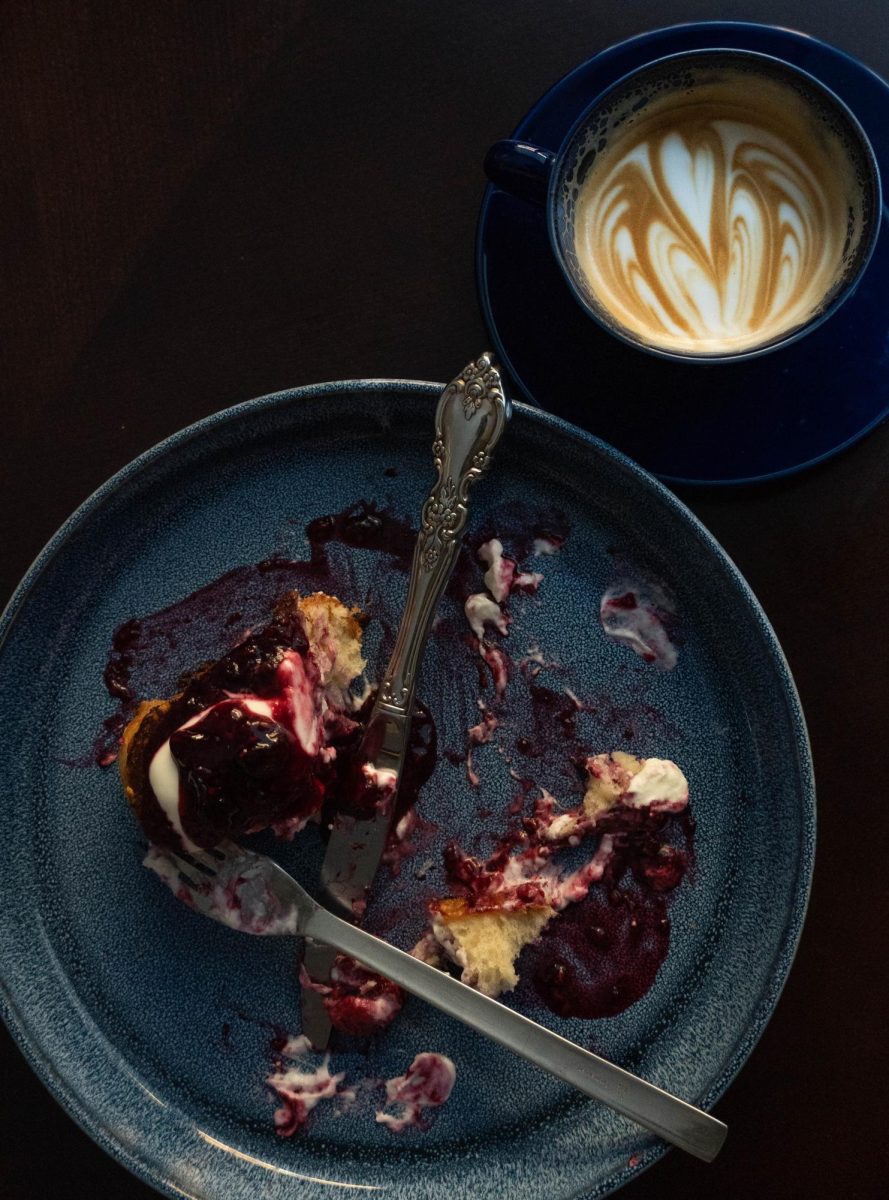It’s hard to believe it’s already December as we enter the Christmas season, stores filled with festive merchandise and food.
As people begin to head home for the holidays, Christmas dinner approaches, with families deciding what to make and what dish they want to present to their relatives. To me, one dish stood head-and-shoulders above the rest: beef Wellington.
The rich and aromatic entrée first entranced me through Gordon Ramsay’s Christmas special, where he made beef Wellington back in 2018 when I was 10 years old, and I haven’t forgotten it since. So this year, I decided to finally try and make it with my friend David Ci, a sophomore at Glenda Dawson High School.
Immediately, we knew this wasn’t a recipe we could spontaneously decide to make.
This one would take time. It would take planning.
For starters, we decided to look for a recipe that we could use or tweak to our liking until we finally decided on one from Joshua Weissman. We chose to substitute a few items in the recipe, like using butter instead of olive oil in the duxelle. This would give the duxelle a much richer flavor. We would spend the next two days creating one delicious Wellington.
The first few steps went perfectly…almost. We started to make the duxelle by evaporating a finely chopped mixture of mushrooms, shallots, garlic and butter with no apparent issues. The problem was that we hadn’t cooked out enough of the moisture. This would lead to a slightly soggy bottom of the Wellington, but overall it still tasted phenomenal.
After putting the duxelle into the fridge, we only had one major step left for the day: prepping the meat. We started by trimming the silverskin, a thin, slimy membrane found on larger cuts of meat, before seasoning the meat.
We then tied the meat up with some butcher’s twine, a string made out of pure cotton used for culinary purposes, and left it in the fridge overnight. The duxelle alone took about three hours. We decided to continue the next day as resting the duxelle and meat was crucial for the duxelle’s flavors to develop.
We started by searing the meat to get a little bit of color on the outside and brushing it with Dijon mustard as a binder for the duxelle. Then, we made two simple crepes that we would use to wrap the Wellington. Next, we started layering. Starting from outside and working inwards, we started with the crepes, followed by a thin layer of prosciutto and a thick layer of the duxelle. Finally, we placed the beef tenderloin in the middle and rolled it up using saran wrap. The beef Wellington would have to sit in the fridge for about an hour to firm up. While it was sitting in the fridge, we prepped the two sheets of puff pastry we would use, one for the actual Wellington and another for decoration.
After rolling, we began the baking process. We started off with around 15 minutes at 400 degrees Fahrenheit but quickly noticed a problem. The puff pastry was browning too fast for the actual beef to cook. We decided to lower the temperature to 300 degrees Fahrenheit and cook it for longer (around 40 minutes). When we thought the Wellington had fully cooked, we took it out and cut it in half before finally revealing what we thought was a perfect steak. We grew tense as we slowly revealed the steak.
Had it gone perfectly? Had we really done it?
Well, it was a disaster.
It turned out that refrigerating the meat and then immediately cooking it caused the inside of the meat to cook far slower than the rest of the Wellington. This meant that the meat was essentially still completely raw. But what could we do? We’d already taken it out of the oven and cut it. As a last-ditch attempt, we decided to cover the Wellington with foil so the puff pastry wouldn’t burn and cook it for another 30 minutes at 300 degrees Fahrenheit.
As we took off the foil, we watched the steak ever-so-closely until we could see it fully.
It was medium rare. Perfect. We had done it.
We each sliced ourselves a slice of the Wellington and dug in. It was amazing. The outside layer of the Wellington was crisped perfectly, the duxelle had an ever-so-slightly earthy flavor, the prosciutto gave it the extra salt it needed and most importantly, the beef was tender.
However, if someone asked me if I would recommend making this dish for Christmas for everyone, I would say no. This process definitely isn’t for everyone. It takes two days minimum for the best results and is incredibly expensive for the amount of people it can feed. Beef Wellington is considered a main course, but it isn’t like the stereotypical eat-till-you-burst meals associated with Christmas. It’s a small, incredibly rich meal that should be paired with other entrées. So, while a good burger could easily be just as effective, I think this recipe is definitely worth your consideration.



![[KEITH'S KITCHEN] Beef Wellington](https://threepennypress.org/wp-content/uploads/2024/01/hoaosQUIq3J9fbVrRx5pWf21mgWQSzcVd43gAytM-800x1200.jpg)







